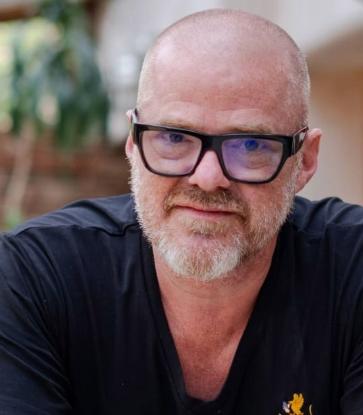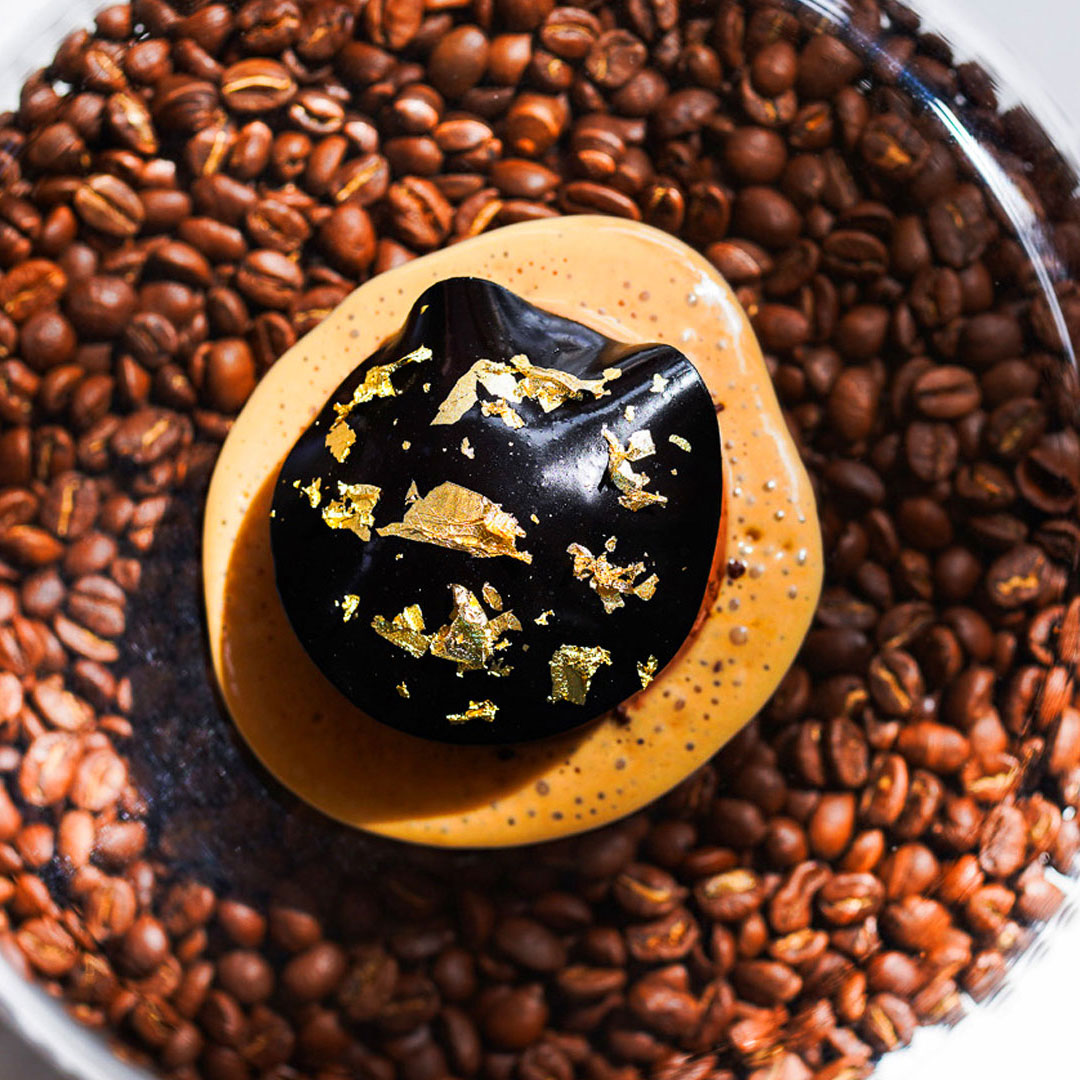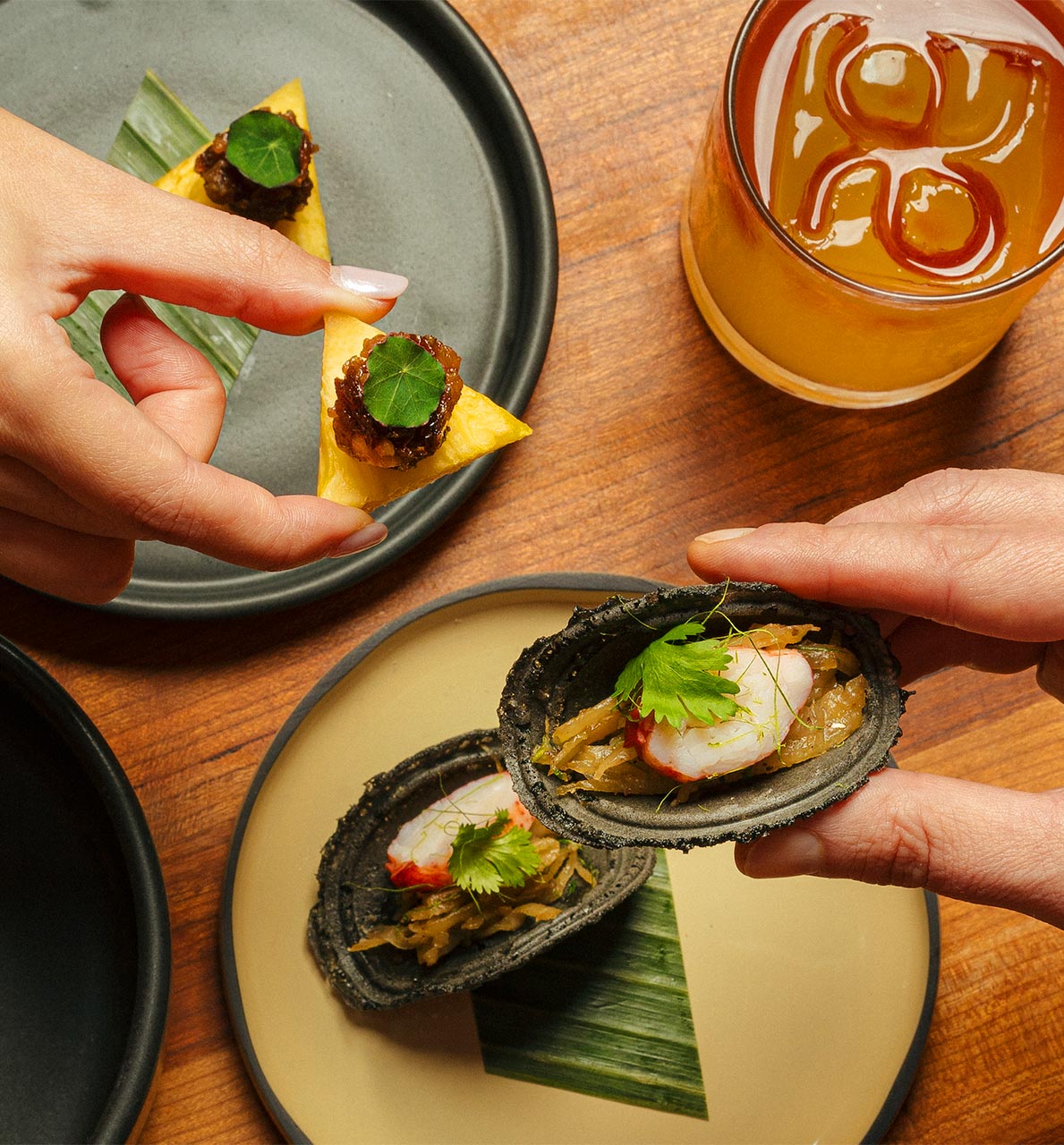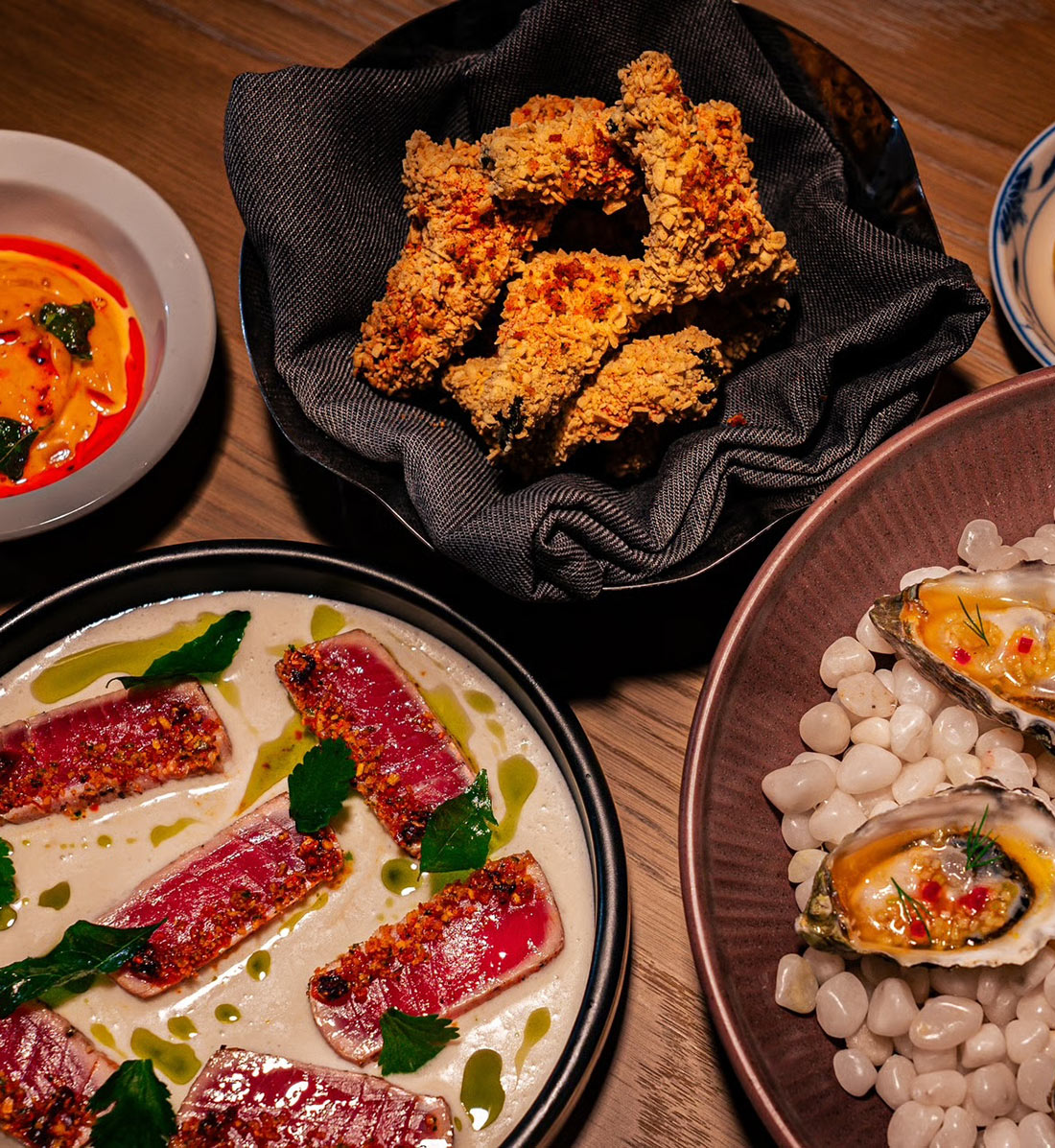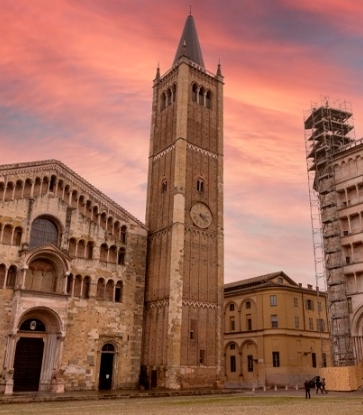A nation of 1.4 billion people with a history steeped in diverse traditions, India has long enjoyed a flavorful culinary landscape. From his humble farm upbringing, Chef Kumar showcases his personal family recipes to diners in New York City’s West Village.
Semma is an ode to Chef Vijay Kumar’s childhood.
From his mom’s mung bean salad to his grandma’s snails, Kumar crafts Semma’s menu from his heart. “The whole entire menu is based on my childhood memories. I grew up helping mom and grandma. They were my first inspiration.”
As a kid, he would visit his grandparents in the countryside, passing time by hunting deer and foraging snails from paddy farms. “My grandparents were from a very tiny village where there's no electricity, buses, or proper roads. They used to take me hunting for deer. That's why venison is on the menu.” Goat intestines were from his mom, who got them for free at the butcher shop. “She makes such amazing things out of it. It’s very healthy and flavorful.”
Snails are one of his favorites. He reminisces, “When I'm talking to you, I can just picture my grandparents, how we used to go foraging [for snails], wash them in the freshwater, get the mudpot in an open fire with all the fresh spices like tamarind and coconut. Those are beautiful memories. I wish I had the experience again, one more time.”
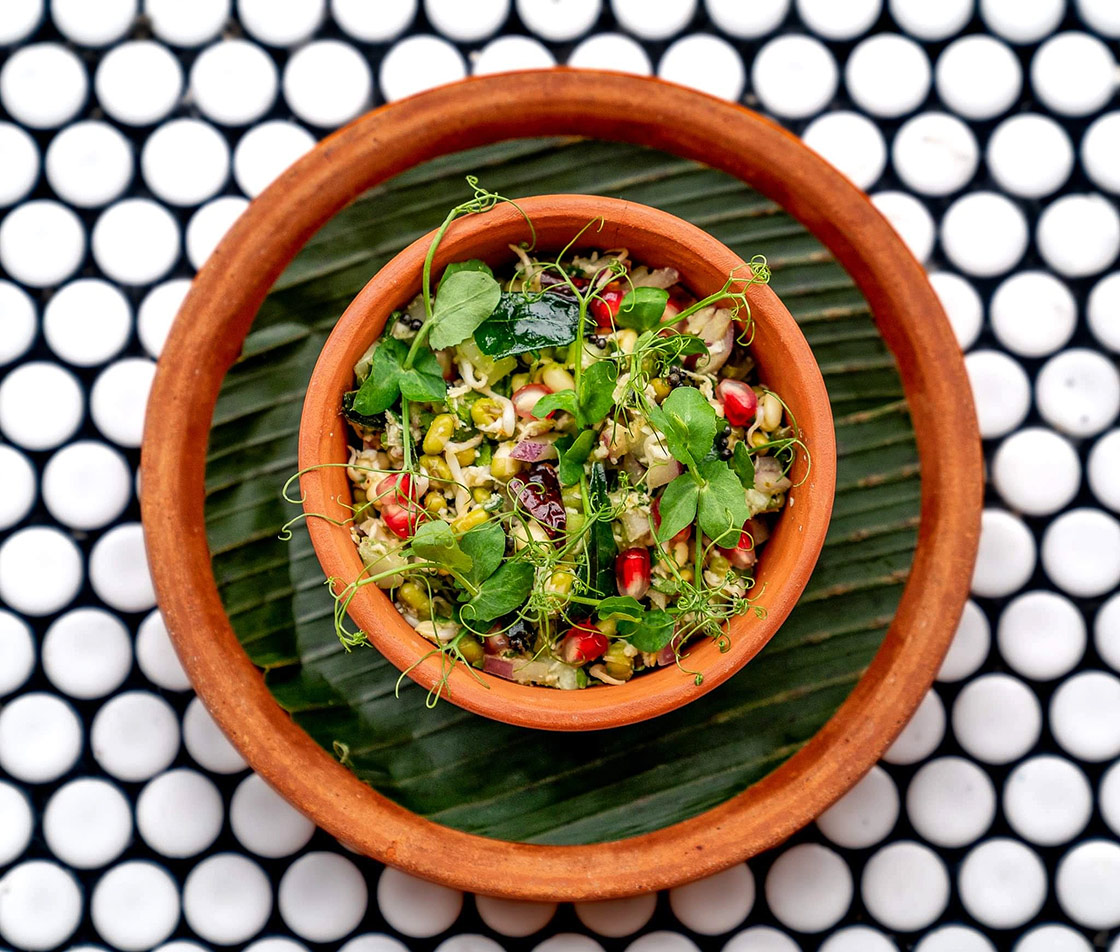
RELATED: Ingredient Spotlight - Snails
Kumar gets to relive those fond memories through Semma. Introducing his restaurant, he says, “We like to represent and showcase our authentic South Indian cuisine unapologetically. We really want to be who we are. To respect and honor our roots, stick to our heritage.”
It wasn't easy for Chef Kumar to muster enough courage to unapologetically serve snails and goat intestines on top of banana leaves. “Growing up, you can’t tell your classmates you’re eating snails. They’d make fun of you because it's considered to be poor people's food," he explains. "I was hiding for so long.”
To pursue his interest in food, Kumar attended culinary school, where he learned classic French techniques. His culinary curiosity led him to cook on cruise ships, where he had “no creativity and no freedom,” but learned to efficiently prepare high volumes with precision. A big surprise through it all? Learning that snails were a culinary delicacy, such as French escargot.
Along the way, chef Kumar met chef Chintan Pandya and Roni Mazumdar of Unapologetic Foods, a restaurant group also behind Bib Gourmand Dhamaka. They encouraged Kumar to fully be himself. “That's what we embraced: to actually go into his personal life, taking all those components that he might have felt a bit insecure about, vulnerable about, and for once sharing that with the world.”
And from that, Semma was born. On the menu, Southern Indian favorites include the Dindigul biryani (mixed rice with goat) and attu kari sukka (lamb). Diners regularly tell Kumar that the flavor is, “exactly how I was eating back in the streets of Chennai and Madurai.”
Another star is the gunpowder dosa. Kumar says, “Dosa is the first thing I learned to cook. The first one I just messed up so bad, I was in sixth or seventh grade.” Mazumdar adds, “You have to train for years to make the perfect dosa.”
With his gunpowder dosa, Chef Kumar found that perfect dosa. He explains, “It’s a very long process. It takes two to three days. You have to soak the lentils overnight. You make the batter by blending it and then ferment it for another six to eight hours. Then you make your sambar, cook the lentils, vegetables, and spices. We make coconut and turmeric chutneys. Every single component has a lot of ingredients, and it’s very labor intensive.”
In some ways, Semma’s menu transports diners back in time to 35 years ago. Since deer hunting is no longer allowed in India, Kumar says, “you can get the venison here, which you don’t find in India.” Mazumdar adds, “Beef is banned in certain parts of the country. Snails and goat intestines, you’re not going to find that readily.”
Even drinks have hometown ingredients like paan (betel nut leaf) and kokum syrup. “The goal has been to make it fun, while really sharing ingredients that [diners] might not have ever tried.”

DISCOVER NOW: The Best Indian Restaurants in New York
For many diners, including food personality and Taste the Nation host Padma Lakshmi, Semma is the perfect reminder of home. Chef Kumar says, “[It] was very heartwarming to see people get so emotional about the food. You feel like you’re at your home away from home.” The restaurant’s greenery is reminiscent of India’s luscious nature, the ceiling resembles houseboats in Kerala, and even the chairs are familiar. Mazumdar explains, “These are extremely iconic chairs to Southern India. The moment you sit down, you remember that feeling.”
Traditional, colorful artwork lines the room. Mazumdar says, “The idea was vibrancy. We wanted the place to be colorful because it represents India.” Of a mural, Mazumdar describes, “We're looking at two different halves of a dancer. This represents the range of emotions that human beings go through.” Kumar grins, “It's called Kathakali dance in Kerala.”
India’s captivating, rich history has allowed its cuisine to flourish. Kumar says, “There are so many foods we've been eating for thousands and thousands of years. We just wanted to bring back the authenticity, the forgotten, the old roots to New York City.”
Explaining his restaurant’s name, Kumar says, “It's a very slang word in Tamil. Fantastic, superb, excellent. We wanted to be the best of the best.”
In short, Semma is semma—unapologetically, fantastically itself.










